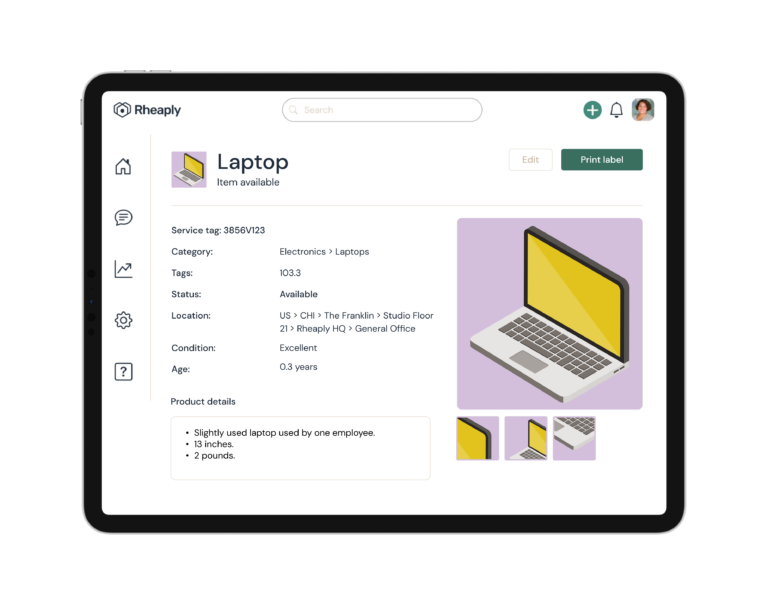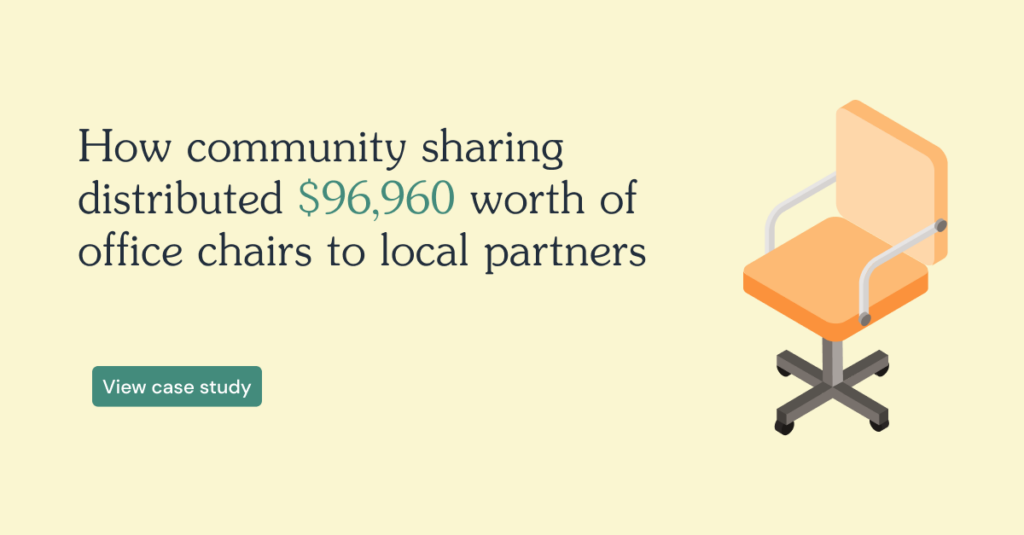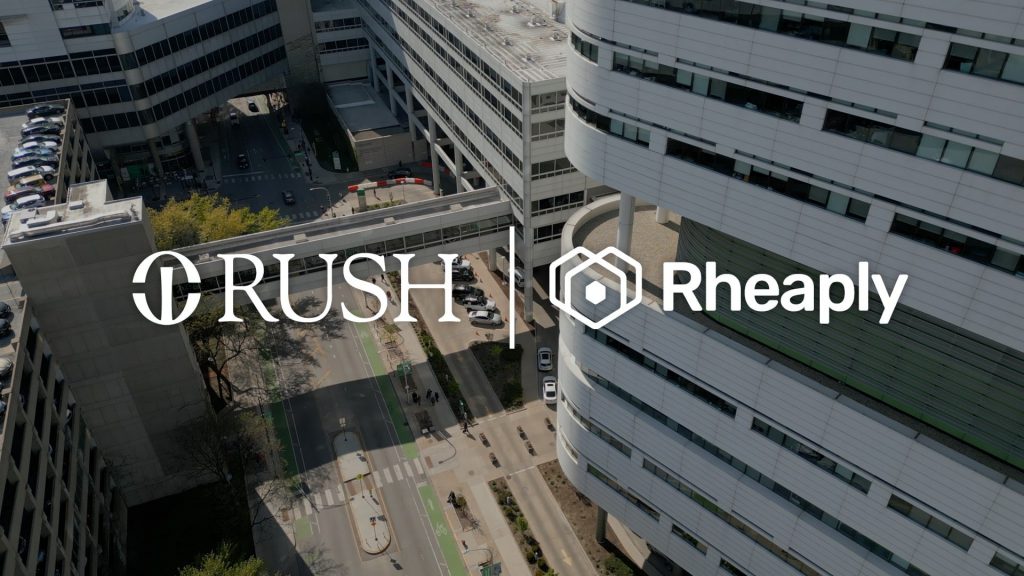Asset Inventory Management Software
Rheaply puts reuse on the table for every organization.
Asset Inventory Management Software
Asset inventory management software is a game-changing technology that has revolutionized the way businesses track, manage, and maintain their assets. This digital solution helps organizations maintain accurate, up-to-date records of their physical and digital resources while streamlining the process of asset allocation and disposal. By implementing an asset management system, companies can better optimize their operations.
This type of software acts as a centralized repository for all asset-related information, allowing businesses to monitor the status, location, and condition of their assets in real time. Real-time visibility enables companies to make well-informed decisions regarding their assets, thus optimizing their resources and reducing wastage. Asset management software can contribute to eco-friendly initiatives in this way.
An asset management system typically comprises several modules that cover various aspects of asset management, such as asset tracking, maintenance management, and asset lifecycle management. Integrating these modules, the software provides a holistic view of an organization’s assets so that they can determine what’s working well and what isn’t. They can then adjust their operations as needed.
The asset tracking module is the core component of asset inventory management software. It allows users to monitor the location, status, and condition of their assets. This module usually employs technologies such as barcodes and radio frequency identification (RFID) tags to track assets so that users can quickly locate and retrieve their resources whenever necessary. By automating the tracking process, businesses can reduce the risk of asset loss or theft.
The maintenance management module helps organizations plan and execute preventive and corrective maintenance activities for their assets. This module assists users in minimizing equipment downtime, extending asset life, and slashing maintenance costs. The maintenance management module typically integrates with other modules, such as the asset tracking module, to provide a comprehensive view of an asset’s maintenance history.
Asset lifecycle management is another key aspect of an asset management system. It tracks an asset from the moment it enters an organization until it is disposed of or retired. This module helps businesses make informed decisions about asset acquisition and management. In essence, it helps to ensure that users maximize ROI from their assets.
Physical asset management software also plays a crucial role in streamlining business operations and enhancing profitability. It provides a centralized platform for tracking, managing, and maintaining assets, which helps organizations take control of their resources. The software enables businesses to make data-driven decisions regarding their assets so that they can maximize profits and reduce their carbon footprint.
Enterprise Asset Management Software
Enterprise asset management software is a sophisticated digital tool that enables users to efficiently monitor and maintain their assets. It centralizes data and automates the management of assets, allowing enterprises to make well-informed decisions about their resources. With enterprise asset management systems, companies can greatly enhance their business processes.
These systems facilitate comprehensive oversight of an organization’s assets by offering various integrated modules that address different aspects of asset management. They typically include asset tracking capabilities, maintenance planning, and asset lifecycle administration. As such, businesses can obtain a complete understanding of their assets, which allows them to optimize resource usage and improve their overall operational performance.
A fundamental component of enterprise asset management software is asset tracking. This feature makes it possible for users to automate the tracking of their assets. In doing so, organizations can more easily plan how and where to distribute resources for maximum efficiency.
Maintenance planning features are also included in asset management software. They allow organizations to schedule preventive and corrective maintenance, minimizing equipment downtime and extending the lifespan of their assets. Keeping up with maintenance is a critical, but often overlooked part of asset management, and businesses that prioritize regularly maintaining their resources can get more out of them in the long run.
Asset lifecycle management is another major component of enterprise asset management software, as it involves monitoring an asset from procurement to disposal or retirement. By tracking an asset’s entire lifecycle, organizations can make better decisions about asset acquisition and allocation.
The best asset management software is characterized by its ability to streamline business processes and enhance profitability. While each business is unique, it’s important to choose a solution that encompasses the aforementioned features. It should be tailored to your specific needs and compatible with your existing tools and systems.
Enterprise Inventory Management Software
Fixed asset management software is a specialized type of enterprise inventory management software designed around fixed assets, such as buildings, machinery, and equipment. The primary objective of fixed asset management software is to help businesses optimize the utilization of their fixed assets. By implementing a comprehensive asset inventory tool, organizations can ensure accurate and up-to-date records of their fixed assets.
One of the primary benefits of fixed asset management software is its ability to automate tracking. It can provide updated, accurate information about the location, status, and condition of fixed assets, thereby reducing the risk of asset loss or misplacement. In most cases, the software also simplifies asset verification and reconciliation.
Taking a proactive approach to maintenance and asset upkeep is essential for proper resource management, and inventory software allows companies to do just that. What’s more, it helps them identify and address potential issues before they escalate. This, too, is crucial to ensuring smooth operations and the proper utilization of assets.
Another advantage of fixed asset management software is its ability to manage the entire asset lifecycle. From procurement to disposal or retirement, an asset inventory tool provides a comprehensive view of each fixed asset. This holistic approach ensures that organizations maximize return on investment from their fixed assets and avoid unnecessary costs associated with asset mismanagement.
Fixed asset management software can also help organizations comply with financial and regulatory requirements. By maintaining accurate records of fixed asset values, depreciation, and disposals, businesses can see to it that their financial statements are accurate and compliant with relevant accounting standards. This transparency in asset management also aids in reducing the risk of fraud, theft, or misappropriation of assets.
Furniture Inventory Management Software
Open source asset management software solutions offer cost-effective alternatives to proprietary tools, allowing businesses to manage their assets efficiently without incurring significant expenses. These solutions are particularly beneficial for small and medium-sized enterprises (SMEs) looking to optimize their operations while keeping costs low.
The following are some popular open source asset management software solutions and their applications, including furniture inventory management software and office furniture recycling.
- Snipe-IT: Snipe-IT is a popular open source asset management software solution designed to help organizations track, manage, and maintain their physical and digital assets. It is particularly useful as a furniture inventory management software, allowing businesses to keep track of their office furniture and equipment.
- GLPI: GLPI is a powerful open source asset management software solution that provides a comprehensive suite of features, including asset tracking, maintenance management, and contract management.
- OpenMAINT: OpenMAINT allows users to more easily manage their physical assets, including furniture. It can be used as a furniture inventory management software to keep track of office equipment. OpenMAINT can also assist businesses in managing office furniture recycling efforts by tracking the disposal and recycling of outdated or damaged assets.
- AssetTiger: AssetTiger is a cloud-based open source asset management software solution that offers a plethora of valuable features for a wide range of purposes. Like OpenMAINT, it can be a valuable solution for those looking to repurpose or recycle their office furniture.
Rheaply offers a robust set of features to help businesses manage their office furniture and other equipment. Rather than simply disposing of excess inventory, Rheaply allows users to promote a circular economy. By doing so, they can enjoy benefits like cost savings and reduced environmental impact.
Equipment Inventory Management Software
Selecting the ideal asset management software can be challenging due to the number of options available on the market today. However, by considering key factors and following a structured approach, businesses can identify the right software solution tailored to their unique needs.
Here’s how you can choose the best asset management software and evaluate different options, including equipment inventory management software and office equipment disposal solutions:
- Identify Your Needs: Determine the type of assets you need to manage and consider the specific features required by your business.
- Establish a Budget: Set a budget for asset management software, taking into account factors such as licensing fees, implementation costs, and ongoing maintenance expenses. Assess the ROI the software is expected to provide based on efficiency, reduced asset downtime, and cost savings.
- Research Available Options: Investigate various asset management software solutions that are currently on the market, including equipment inventory management software and office equipment disposal solutions. Shortlist potential options based on your requirements.
- Compare Features and Functionality: Evaluate the features and functionality of each shortlisted software solution, focusing on aspects such as ease of use, integration capabilities, and reporting and analytics features.
- Consider Vendor Reliability and Support: Carefully vet each provider. Examine their reputation and track record. It can be especially helpful to view customer testimonials and case studies if available, seeing how other businesses have found success using the software.
At the end of the day, there is no one-size-fits-all solution when it comes to inventory management software, which is why it’s important to weigh your options from all angles. Request demos and trials if available to try the solution before purchasing.



